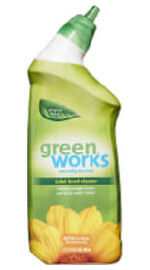Power : Each of the toilet bowl cleaners that we tested generally recommend the following steps to get the best results: flush the toilet, apply the cleaner to the bowl, wait between 10 and 20 minutes with the lid open, scrub the bowl with a toilet brush, and flush again. We tested each cleaner according to instructions, we also tested without scrubbing, to see which product got the job done with the least effort. According to our criteria, power refers to the product’s ability to tackle grime with the least amount of scrubbing effort.
Application : We weren’t fond of spending a lot of time up close and personal with the toilet bowl, so we rated each product on how easy it was to apply in a swift motion, and how easily the material stuck to the bowl. Due to variations in viscosity and nozzle type, we found that the preferable solutions produced a thick, clingy gel, which helped the solution remain in contact with stains. We’d like to note that some people prefer a more watery solution, typically because they find it easier to scrub and apply evenly. While this is a sound preference, we decided to award higher marks to solutions that clung to the inside of the toilet.
Odor : Many consumers report that the smell of cleaning products alone is a major selection point. With this in mind, we wanted to know which of our test products would produce the most tolerable smells. We determined that the best products leave a slight fragrance with little to no chemical smell, and the worst ones often overwhelmed the living space.
Packaging : Via consumer research we found that the product’s container can be a make-or-break feature, not only due to ease of use, but also in terms of transportation and storage. The best packaging is secure until you need to open it, at which point it requires a simple twist to begin using. Conversely, consumers refused to reorder anything that didn’t arrive at the front door in one piece, was too hard to open and use, or made a mess while stored.
Usage : We measured the of the amount of material required per use. Our most efficient testers used between 3 and 4 ounces per coating, and our least efficient ones required 6 ounces and up. We awarded higher marks for products that went the distance in terms of cleaning usage per bottle.





